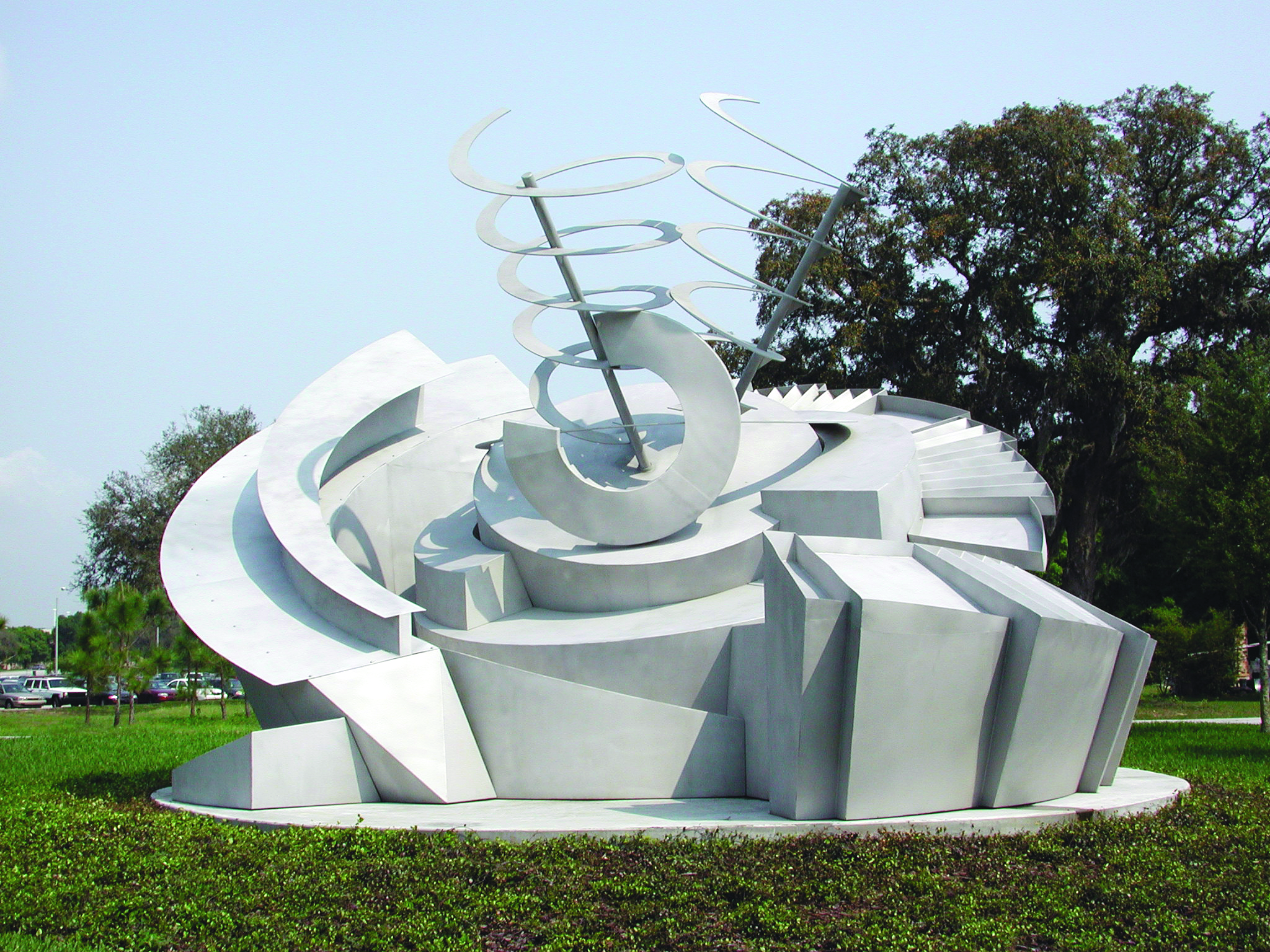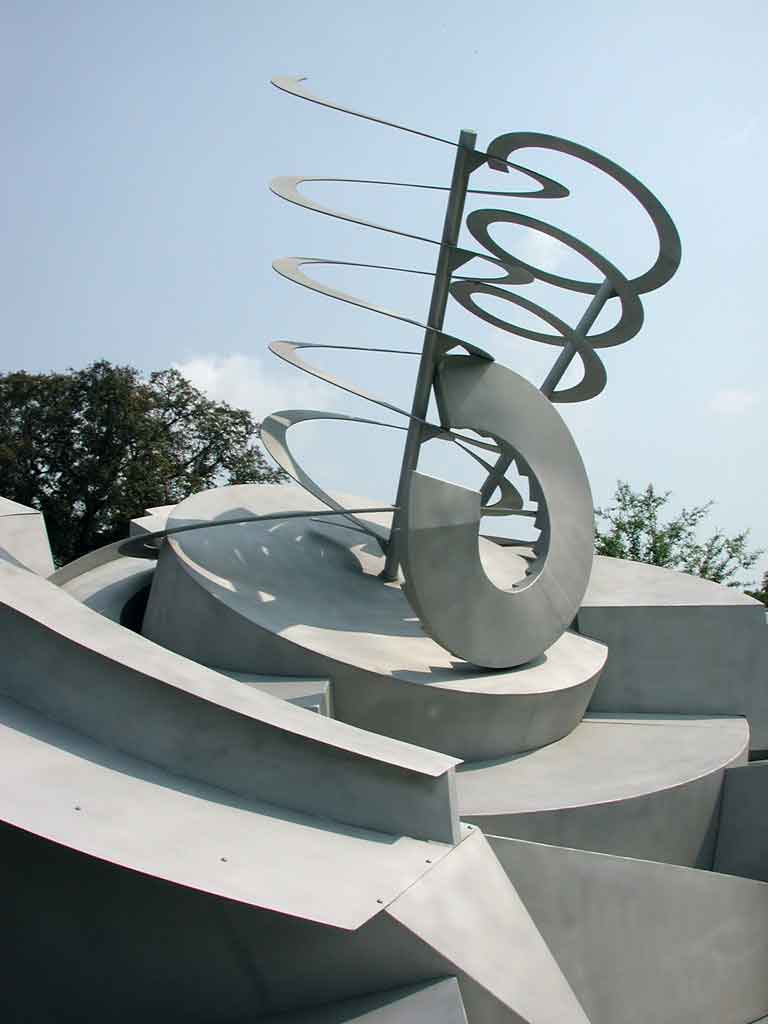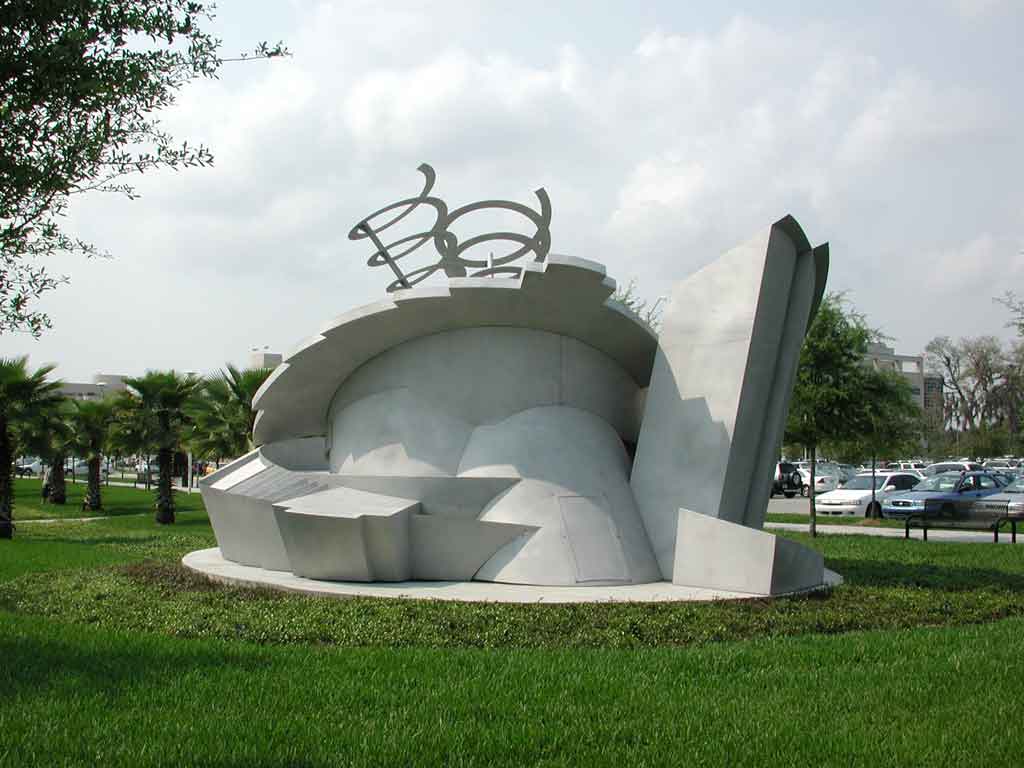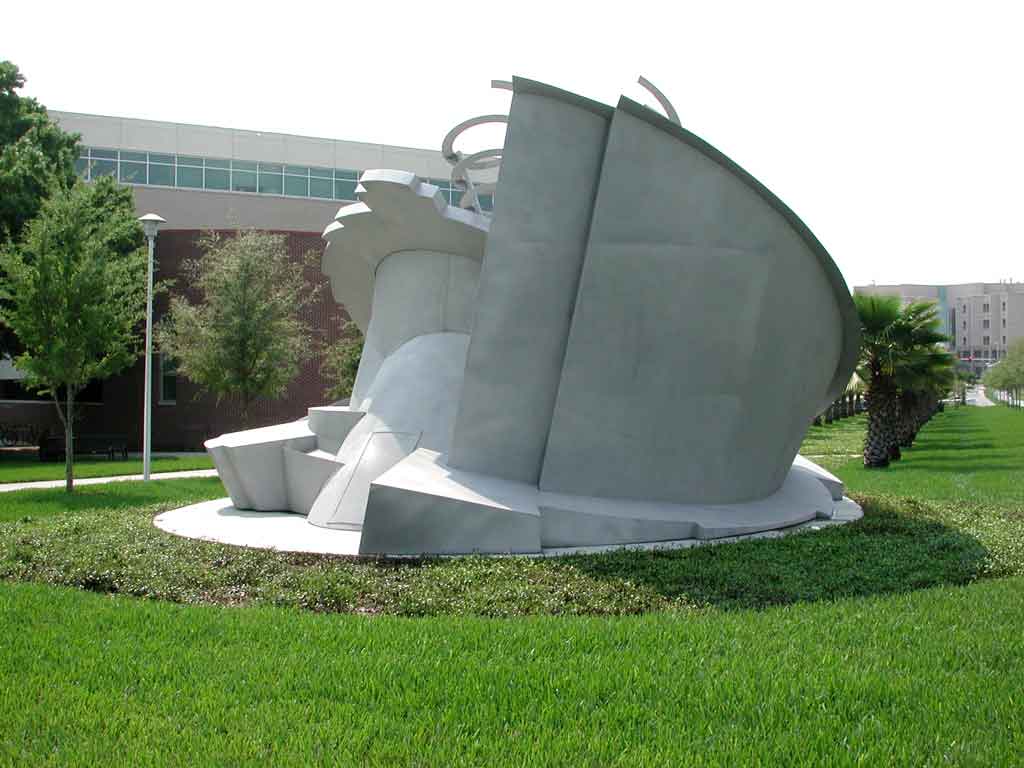Alice Aycock
Maze 2000,
2002
LOCATION:
University of South Florida, Tampa
Psychology and Communication Sciences & Disorders
PROJECT DESCRIPTION:
Alice Aycock’s, Maze 2000 was designed to serve as a landmark to commemorate the first architectural footprint of USF’s new Interdisciplinary Campus, Psychology and Communication Sciences & Disorders. This new campus links the Medical Campus to the Academic Campus both geographically and intellectually. Aycock’s sculpture both celebrates the union and elaborates on the meaning and ambition of the interdisciplinary study and research that is the focus of the new campus.
Maze 2000 engages a broad range of metaphorical content. Aycock made reference to the content, which she consciously employed in developing this project during a series of presentations.
She discusses the work as a sort of compass; but this is a compass whose needle quivers, suggesting a non-permanence of direction, which she felt underlies the reality of one’s life.
The experience of the work for the viewer takes place over time. As the viewer moves around the piece, they access ever-changing facets of the work, engaging their memory as a tool in understanding the sculpture. The viewer must, therefore, deal with the work in a fashion similar to the way they deal with their lives; organizing it through the use of a mental construct. In this sense, the work is evocative of concerns, which are at the heart of psychology.
The work is layered and non-linear. Aycock likened this aspect of the piece to the quest for knowledge. Just as the viewer would be pursuing understanding of the work from various vantage points, so the student seeks knowledge from different perspectives and from different layers.
Aycock talked about thoughts never being at rest. In the swirling and layered presence of the piece, the viewer’s eye, like a thought or idea, finds no place to rest.
While the piece is monumental in scale, it opens from bottom to top in a fashion that recalls the blooming of a rose.
The work is generated, in part; by an interest Aycock has had in certain Indian observatories; specifically Jaipour and Yantra.
ABOUT THE ARTIST:
Alice Aycock was born in Pennsylvania in 1946. She completed her B.A. at Douglass College, New Jersey and received her M.F.A. from Hunter College in New York, where she studied with Robert Morris.
Aycock was in residence at the University of South Florida in 1980 where she constructed a temporary outdoor sculpture, Collected Ghost Stories from the Workhouse, outside the USF Art Department's sculpture shop. During that time, she also worked at Graphicstudio and produced two color intaglios.
Alice Aycock is a significant contributor to the public art realm. Her major works of the 90s include Cyclone Fragment for the San Francisco Public Library, a 200 ft. long suspended sculptural installation with moving parts for the Sacramento Convention Center, and the East River Roundabout, a sculptural rooftop installation, for the East River Park Pavilion at 60th Street in New York City. Most recently, she completed Star Sifter, a large architectural sculpture for the rotunda of the new Terminal One at JFK International Airport. Currently, Aycock is working on a GSA commission for the entrance to the Fallon Building in Baltimore, as well as a commission for the Philadelphia International Airport.
Alice Aycock's work is found in important collections throughout the world including the Museum of Modern Art, the Guggenheim Museum of Art, the Metropolitan Museum, the Whitney Museum of American Art, the Los Angeles County Museum, and numerous cultural institutions throughout Europe.
In Loving Memory of
AMY GAIL BUCHMAN
1974–1998
She loved everything about being a speech pathologist. We still feel her energy, love and compassion, and remember her "joy of life." Those of us fortunate enough to have known AMY GAIL, will never be quite the same.
Who was Amy Gail Buchman?
Eventually someone will ask: "who was Amy Gail Buchman?" The answer is simple. Amy was a special woman who loved learning. She studied hard and became an outstanding speech therapist. She was loving, sweet and vivacious with a goal to bring happiness to others. Amy could make a day brighter or a room glow with her natural charm and enthusiasm. She was nice to everyone. Who was Amy Gail Buchman? Amy was the kind of person all of us should want to be like. If we follow her example we will help complete the good work she began. Amy lost her life in a car accident at age twenty-four, but the beauty of her short life will never be lost to us.
Maze 2000 made possible by Florida's Art in State Buildings Program and the generosity of Cookie and Booky Buchman in memory of their daughter Amy Gail.



